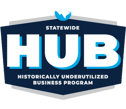How many hours do you estimate it would take a mid-sized hospital staff to create and manage a hazardous drugs database manually?
What about the time needed to assess each new drug added to the NIOSH list or added to your own HD list?
A mid-size hospital will also spend considerable amounts of time training and onboarding staff and conducting risk management assessments. These essential activities require staff and, most importantly, time. The catch is that compliance isn’t a one-time, beginning-to-end process; it’s an ongoing effort to protect your healthcare workers from exposure to hazardous drugs. The costs continue to add up - especially if your organization takes the manual approach to hazardous drug management.
When we asked one of our customers if manually updating their hazardous drug list was feasible, she responded with an emphatic no. “It’s definitely not a one-and-done because there are constantly new drugs coming out. It will take some maintenance, and someone must keep up with it on a continuing basis.”
That’s what we’ve heard repeatedly from customers and prospects, so we created a Return on Investment (ROI) case study. We hope it helps you better understand and easily communicate the actual amount of time and staff required for tasks required for the HD communication plan in USP <800>. The time estimates are based on a hospital with 350 hazardous drugs on its list and multiple customer interviews to determine the scope of work for this complex and perpetual process.
The case study is clearly broken down into areas of time savings, including database management, workflows, real-time compliance monitoring, training and onboarding, and risk management. It includes hour estimates for each task, so you can easily plug in an estimated cost per hour to determine your organization’s cost for a manual and automated hazardous drugs list management effort.
The ROI Case Study is another resource in our expanding library to assist healthcare organizations in their efforts to comply with USP <800> and protect healthcare workers from dangerous exposure to hazardous drugs. Be sure to check out the ROI Case Study and other helpful aids on our Hazardous Drug Resource page. And if you have feedback on the ROI Case Study, we’d love to hear from you. Email us at info@rpharmy.com.

